Cycling During Pregnancy: Key Benefits, Tips, and Safety Guidelines
Follow us on
social media!
Bicycling During Pregnancy?
Absolutely! Here's What You Need to Know

Pregnancy is an incredible journey filled with excitement and new experiences. If you're an avid cyclist, you might wonder if you can continue enjoying your cycling adventures during this special time. The good news is that, in most cases, cycling can be a safe and enjoyable way to stay active while pregnant. However, it's important to approach cycling during pregnancy with caution and the correct information. In this comprehensive guide, we'll cover all you need to know about cycling during pregnancy, from the benefits to safety tips and adapting your routine through each trimester.
Embracing the Benefits of Cycling During Pregnancy
Cycling during pregnancy offers a range of benefits for your physical and mental well-being. Engaging in regular, moderate exercise can help improve your cardiovascular health, boost your mood, and promote better sleep. Cycling is a low-impact activity that can alleviate pregnancy discomforts such as back pain, swelling, and constipation. It also helps maintain a healthy weight, which is crucial for a smooth pregnancy and postpartum recovery.
Benefits of cycling during pregnancy may include:
- Improve cardiovascular health, which is important during pregnancy.
- Boost your mood and help alleviate stress and anxiety.
- Promote better sleep, a common challenge for pregnant women.
- Relieve pregnancy discomforts like back pain, swelling, and constipation.
- Help maintain a healthy weight, which is essential for a smoother pregnancy and postpartum recovery.
What These Moms Have to Say About the Benefits of Cycling During Pregnancy


We spoke with Jeana Miller, CTS Pro Endurance Coach about training during her pregnancies and the benefits she found. Jeana lives in San Clemente, CA with her husband and three beautiful children.
“Most people think about the common benefits of staying healthy and active during pregnancy such as maintaining healthy weight gain. But there are two other lesser-known benefits of staying strong and active during pregnancy", Miller says. "1) A strong and healthy body eases the labor and delivery process. 2) A strong and healthy expecting mom is likelier to produce strong and healthy kids”.

Randi is a mother of three, including twins. She is a Physical Therapist and lives in Orange County, California with her husband and three daughters. During her first pregnancy, she rode outdoors until four months then transitioned to the indoor trainer and Zwift. “During my first pregnancy, I needed those rides mentally. I would ride before work most mornings, which allowed me to be more alert, happy, and able to tolerate life’s challenges better. During my second pregnancy (with the twins), I knew I wanted to return to racing so I wanted to maintain as much fitness as possible during pregnancy.”

Madeline Depman is a professional mountain bike racer and coach who lives in Duluth, MN with her husband and 10-month-old daughter. When we asked her what she found to be the most significant benefit to being able to ride during pregnancy, she stated "It just made me happy, and it felt so good to be active."
Prioritizing Your Health and Safety on the Bike

Cycling can be a fantastic way to maintain your fitness level during pregnancy. It's a low-impact cardiovascular exercise that helps improve your stamina, strengthen your muscles, and enhance your overall well-being. However, before you hop on that saddle, there are important considerations to keep in mind.
Safety Precautions for Cycling During pregnancy:
When bicycling during pregnancy, safety should be your top priority. Here are some essential safety precautions to follow:
- Consult Your Healthcare Provider: Before embarking on any exercise regimen during pregnancy, including cycling, it is crucial to get the green light from your doctor. Every pregnancy is unique, and your doctor can assess your individual health situation to determine if cycling is safe for you and your baby.
- Always Wear a Helmet: Always wear a properly fitting helmet to protect yourself in case of a fall. The Truth About Your Helmet article explains everything you need to know about bicycle helmets.
- Stay Hydrated: Dehydration can lead to discomfort and complications. Carry plenty of water and drink regularly throughout your ride.
- Consume Proper Calories: Your body is burning more calories than before your pregnancy. Be sure to eat healthy snacks along your ride.
- Choose Safe Routes: Look for well-paved roads, designated bike paths, and non-technical dirt trails to minimize the risk of accidents. Choose routes that are closer to home and tell loved ones where you are going and when you expect to be back.
- Carry a Phone and Stay within Cell Service Areas: The last thing you want, while you are expecting, is to be unexpectedly stranded somewhere.
- Listen to Your Body: Pay attention to how your body feels during the ride. If you experience any discomfort, dizziness, or pain, stop immediately.
-
Avoid Overexertion: Pregnancy is not the time to push your limits. Maintain a moderate conversational pace and avoid strenuous uphill climbs.
When to Avoid Riding Your Bike During Pregnancy
There are situations in which cycling should be avoided during pregnancy. Consult with your doctor for specific instructions that pertain to your pregnancy and overall health.
- High-Risk Pregnancy: If you have medical conditions or complications, your doctor might advise against cycling.
- Balance Concerns: As your belly grows, your balance may be affected. If you feel unsteady on the bike, it's time for a break. Many women choose to transition from outdoor riding to the indoor trainer for safety reasons.
- Third Trimester: During the later stages of pregnancy, your center of gravity shifts, increasing the risk of falls. Consult with your healthcare provider to determine what type of exercise is best for you during these final weeks. If the indoor trainer is not for you, try other activities such as walking, easy hiking, and swimming. Prenatal yoga is another great option as it also helps prepare you for breathing techniques you will use during childbirth.
Modifying Your Cycling Routine for a Leisurely Pace

While you might be a trail-blazing daredevil at heart, it's time to dial back the intensity a bit. Look for easier
trails, protected bike lanes, or even quiet residential streets. Bumpy trails and extreme terrains can wait until after your little one's debut. For now, it's all about the smooth sailing.
Embrace a leisurely pace that suits your changing body. Focus on enjoying the ride rather than setting any speed records. Think of it as a moving meditation for you and your little one.
Madeline Depman, a pro mountain biker shares with us her tips on bicycling during pregnancy. “I rode up until the week before my baby was born but I had to dial the training way back. I kept my rides super easy and shorter and added in swimming and hiking. Honestly, it was really refreshing to take a break from intense training and enjoy other activities that kept me active”.
You can read more about Madeline in her blog
Reflections and Data: Activity During Pregnancy
Hydration and Calorie Consumption for Pregnant Cyclists

Think of your body as a high-performance baby-making engine – it needs fuel and water! Stay hydrated throughout your ride and pack some energy-boosting snacks. Bananas, nuts, and granola bars are like little powerhouses that keep you and your baby energized. Pregnant women need more hydration, electrolytes, and fuel because they are burning more energy. Madeline provides her experience in her blog
Hydration and Electrolytes in Pregnancy.
Ensuring Comfort and Optimal Body Position on the Bike
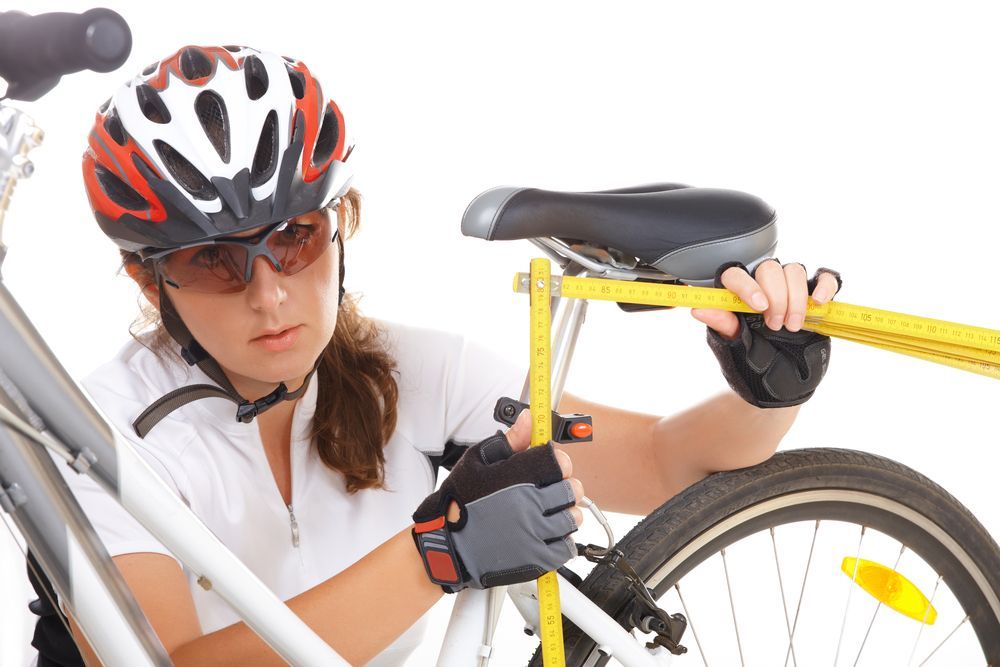
Cycling while pregnant can be a comfortable experience if you prioritize the right positioning. As your pregnancy progresses, your body will undergo changes that might affect your posture on the bike. To maintain comfort and safety, follow these guidelines:
- Seat Adjustment: Ensure your bike's seat is at a height that allows a slight bend in your knee when the pedal is at its lowest point. This prevents strain on your knees and lower back. Your knee should be directly over your foot when the pedal is at the 3 o'clock position.
- Handlebar Height: Adjust your handlebars to a level that doesn't strain your back or shoulders. This promotes an upright posture and reduces discomfort.
- Pregnancy-Specific Accessories: Consider investing in accessories designed for pregnant cyclists. Wider saddles, cushioned seat covers, and maternity cycling apparel can help tremendously. These small additions can make a big difference in your comfort.
- Upright Posture: Sit upright to prevent pressure on your abdomen. Adjust your bike's handlebars and saddle height to achieve a comfortable position.
-
Relaxed Grip: Avoid gripping the handlebars too tightly, as this can lead to hand and wrist discomfort.
If you're an avid cyclist, you might already have a bike that you love. However, during pregnancy, comfort and safety are paramount. As your pregnancy progresses, you will need to adjust your bike fit for better stability and reduced pressure on your lower back. Ensure that the saddle is well-padded and provides ample support. Other adjustments include raising the handlebars for a more upright posture.
Jeana Miller who coaches many cyclists stresses the importance of getting a bike fit during and after your pregnancy. “Your body changes with pregnancy and oftentimes these changes are permanent. Your bike fit during and after pregnancy will be much different than your pre-pregnancy bike fit”.
Maternity Cycling Apparel: What to Wear for Comfort and Support
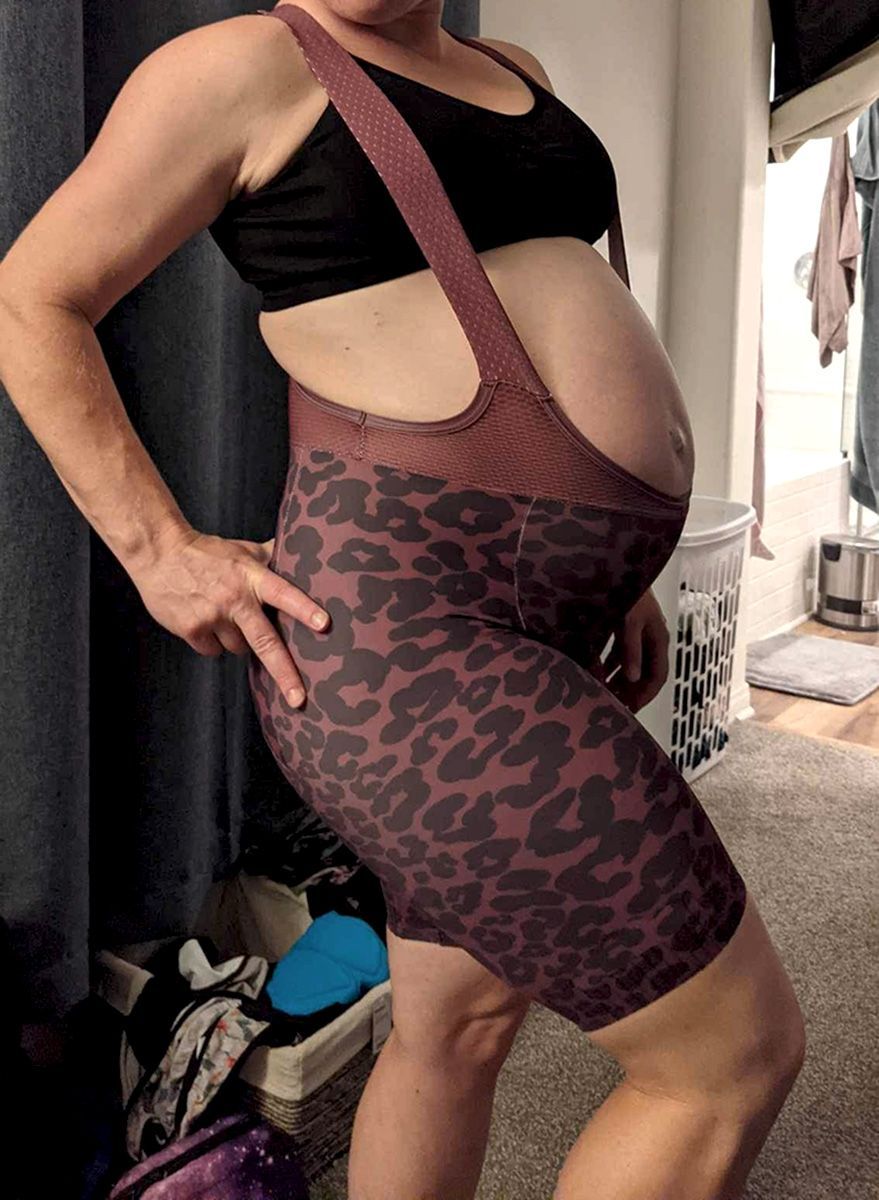
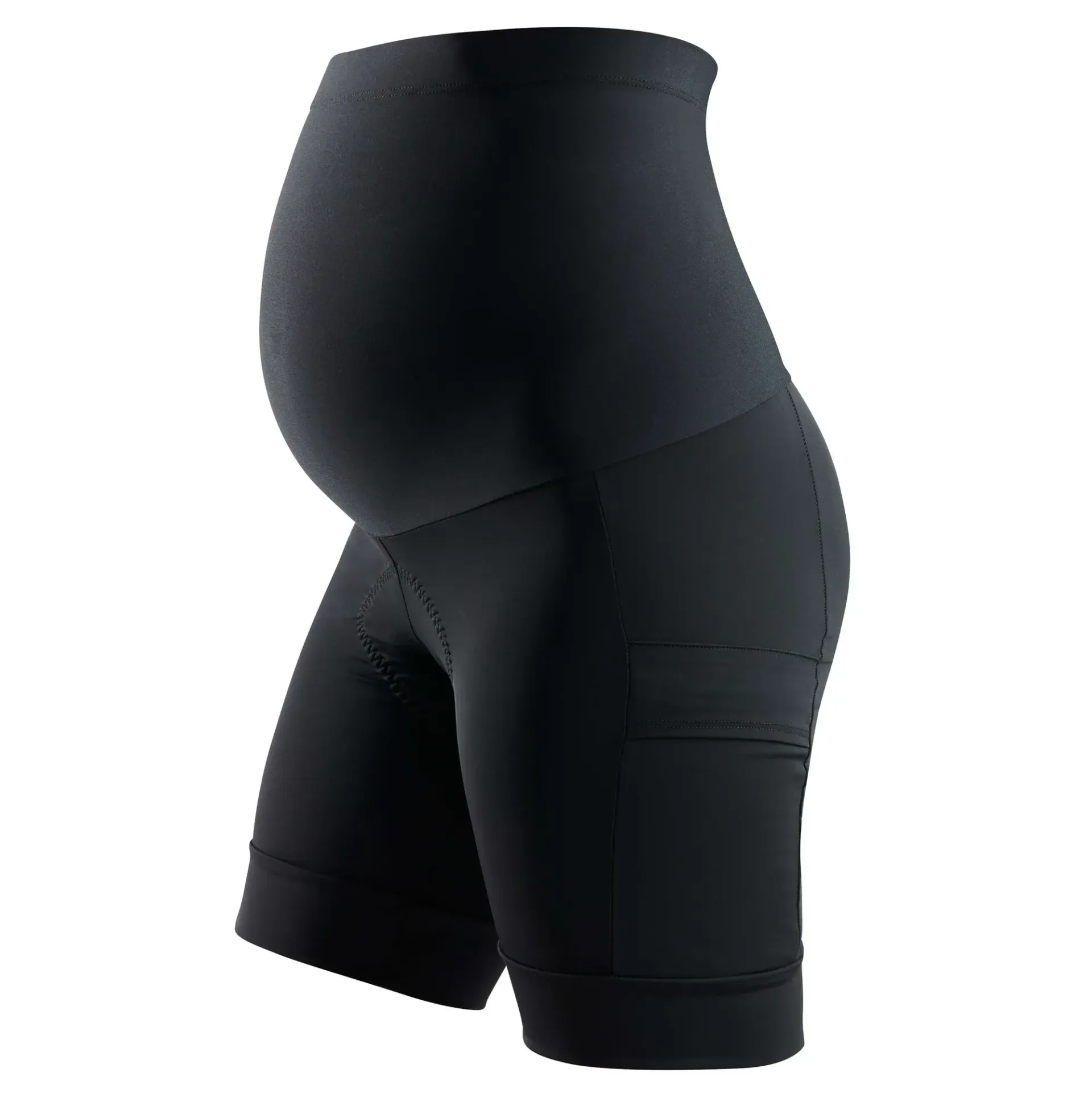
When it comes to biking during pregnancy, comfort is key. And what you wear plays a significant role in ensuring a comfortable and enjoyable ride. Maternity bicycle clothing is specifically designed to accommodate your changing body while providing the support and flexibility you need. In this section, we'll delve into the world of maternity bicycle clothing, discussing its benefits and what to look for when choosing the perfect gear for your cycling adventures.
Choosing the Right Maternity Bicycle Clothing:
- Size Matters: Just like any other clothing, selecting the right size is crucial. Maternity cycling shorts should offer a snug yet comfortable fit that supports your belly without feeling too tight.
- Belly Coverage: Look for maternity cycling shorts with a higher waistband that fully covers your belly. This ensures that the waistband won't dig into your skin and cause discomfort.
- Breathable Fabrics: Look for moisture-wicking and breathable fabrics that keep you cool and dry during your rides. Fabrics like spandex blends provide the necessary stretch and comfort.
- Supportive Features: If you prefer added belly support, choose maternity cycling shorts with built-in panels that provide gentle compression. This can alleviate discomfort and promote stability.
- Padded Options: Some maternity cycling shorts also come with built-in padding for extra comfort during longer rides. This can help reduce pressure on sensitive areas and enhance your overall cycling experience. We found these padded maternity shorts at Kaden apparel.
- Bib Shorts: Many moms-to-be found that wearing their older stretched-out bib shorts worked just fine. You can always purchase new ones in a size or two larger than you would normally wear. Bib shorts offer great support and the straps keep everything in place.
- Full Outfit: Consider pairing your cycling shorts with a loose-fitting maternity jersey. This combination ensures a comfortable and coordinated look while offering ample room for movement.
-
Trial and Error: Remember that every pregnancy is unique, and what works for one person might not work for another. It's a good idea to try on different styles and brands to find the one that suits you best.
The Pros and Cons of Various Bicycle Disciplines During Pregnancy
OUTDOOR CYCLING
Riding outdoors has tremendous benefits for our overall physical and mental health. However, outdoor cycling adds an element of unpredictability. Factors beyond your control, such as weather, road conditions, traffic, and weather, make it riskier. The risk of falling, which could jeopardize your pregnancy, is much greater outdoors. Remember to consult with your physician before heading out the door for your ride.
Road Cycling During Pregnancy
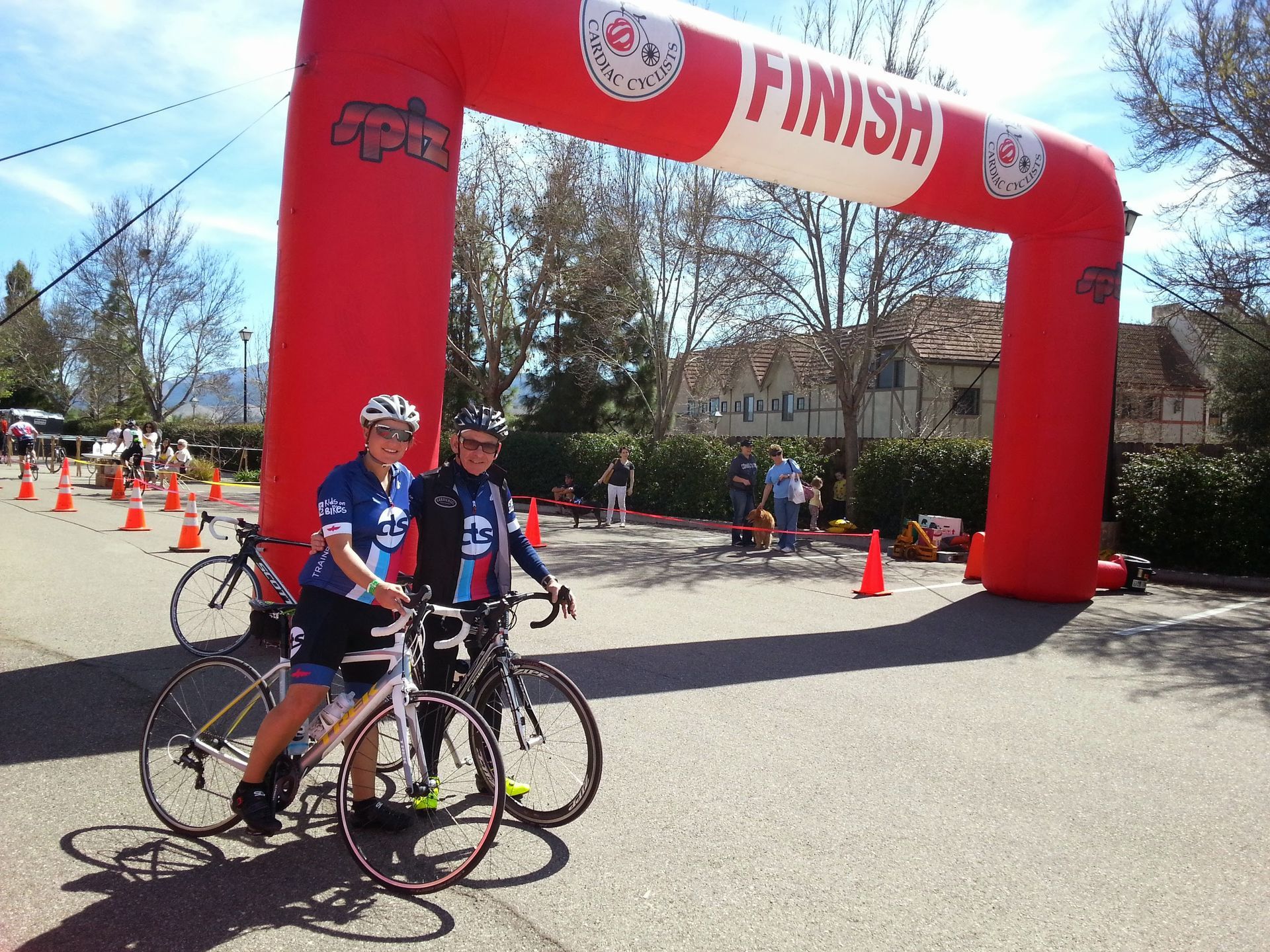
Benefits:
Road cycling is a popular discipline that offers various benefits for pregnant women. It provides a low-impact cardiovascular workout, helping to maintain heart health, endurance, and muscle tone. The controlled environment of roads or cycling paths ensures a smooth ride, reducing the risk of sudden jolts or impacts. Additionally, road cycling can alleviate stress and improve mood, which can be especially beneficial during pregnancy.
Concerns:
While road cycling is generally considered safe for seasoned cyclists during early pregnancy, there are some concerns to keep in mind. As pregnancy progresses, the center of gravity shifts, affecting balance and creating a greater risk for falls. A growing belly may also alter posture and positioning on the bike, leading to discomfort. As soon as you notice this shift in balance, it is best to transition to the indoor trainer or opt for walking and easy hikes instead.
Mountain Biking During Pregnancy

Benefits:
Mountain biking offers a thrilling outdoor experience for those who are already seasoned riders. The uneven terrain and natural obstacles provide an engaging full-body workout that can help maintain strength, coordination, and agility. The connection with nature can also contribute to mental well-being.
Concerns:
Mountain biking presents higher risks due to the challenging terrain. During pregnancy, the risk of falls or crashes can lead to serious
injury for both the mother and the baby. As such, it's generally advised to avoid technical trails and opt for more moderate trails. It's crucial to consult a healthcare provider before continuing mountain biking while pregnant.
Triathlon / Time Trial Cycling During Pregnancy
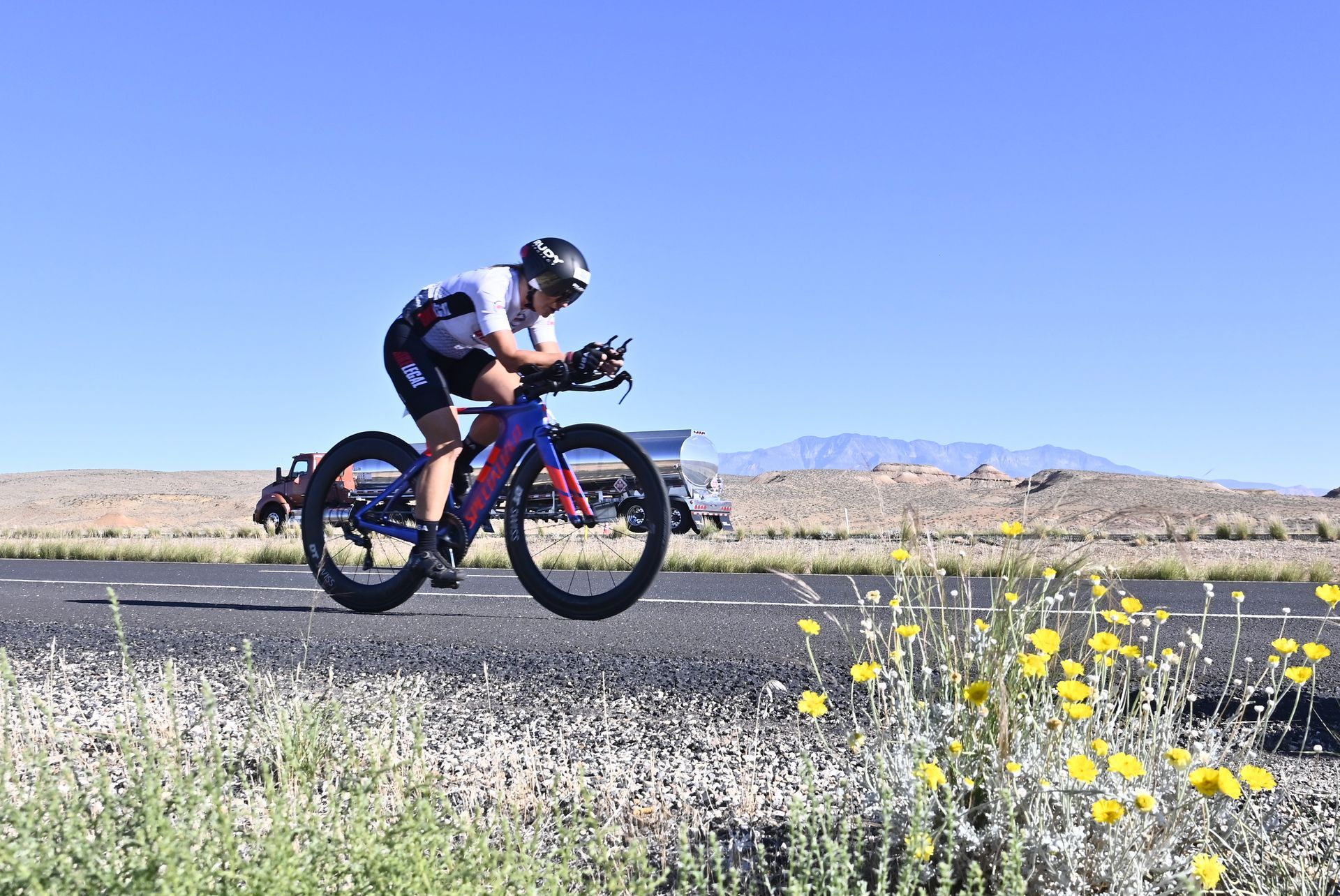
Benefits:
Triathlon and time trial cycling focus on speed and endurance. During pregnancy, it is advised to dial back the intensity to a conversational pace. This lower zone 1-2 training can help maintain cardiovascular fitness and muscle tone.
Concerns:
Like road cycling, the shifting center of gravity and changing body proportions can impact bike positioning. As pregnancy advances, the tuck position required on TT bikes will undoubtedly become both uncomfortable and unsafe. It is highly recommended to ditch the TT position and opt for a bike with a more upright and comfortable positioning.
Gravel Biking During Pregnancy
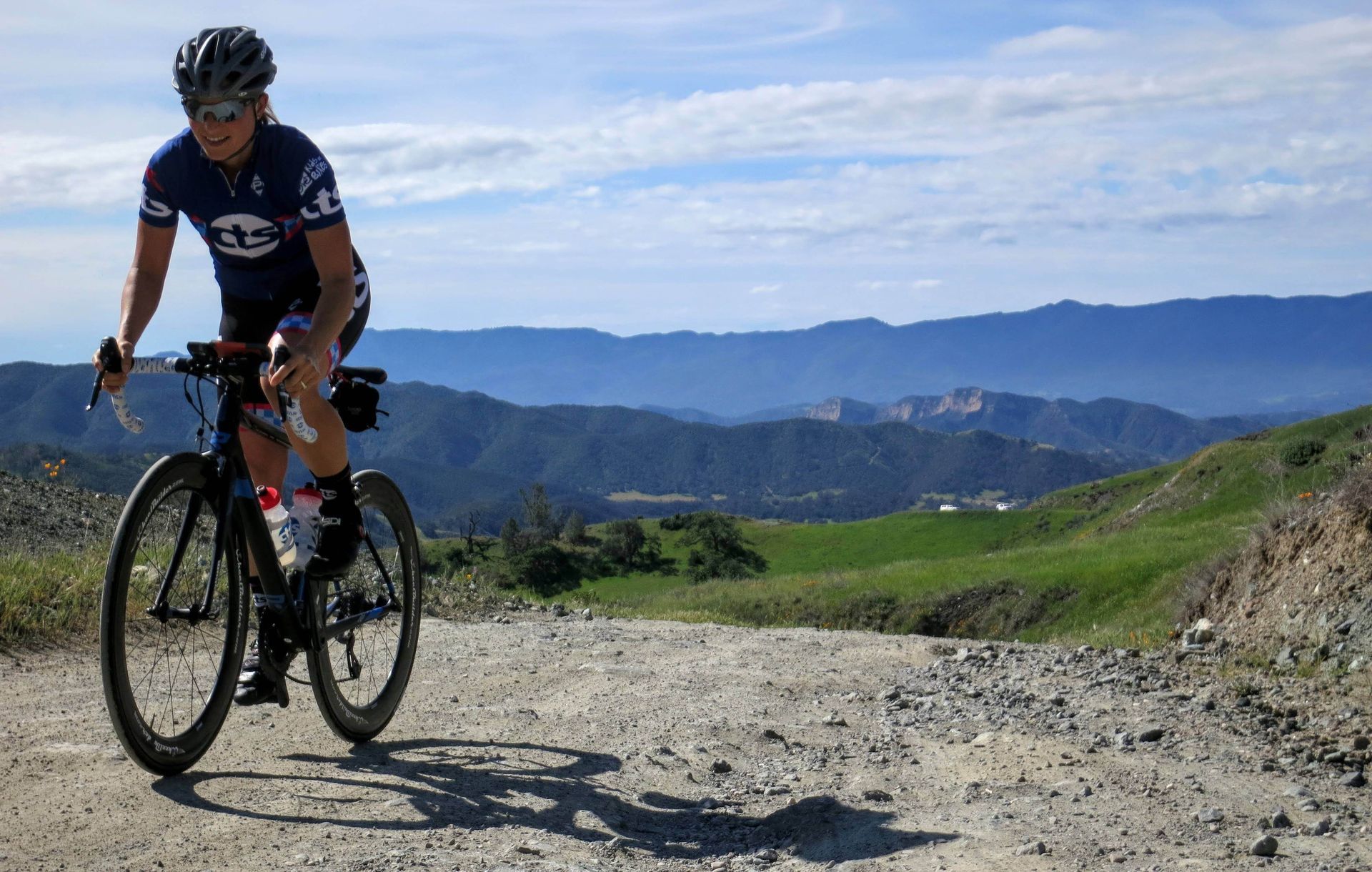
Benefits:
Gravel riding combines elements of road cycling and off-road trails, providing loads of fun and adventure. The diverse terrain engages various muscle groups and promotes cardiovascular health. Many women opt for gravel riding because it is away from the dangers of traffic and usually not as technical as mountain biking
Concerns:
Gravel riding involves mixed surfaces, which can lead to a bumpy ride. As pregnancy advances, discomfort might arise due to the vibrations from rough terrain. Additionally, the potential for sudden shifts in terrain might increase the risk of falls. Opting for smoother gravel paths and using a bike with wider tires for better shock absorption can help mitigate these concerns.
INDOOR CYCLING
Indoor Cycling is a wonderful option for women who are concerned about the risks of riding outdoors. Additionally, riding indoors allows the rider to control several factors such as temperature, intensity, time duration, and ease of hopping off the bike for bathroom or food breaks. There are so many options for great workouts such as group spin classes, Peloton, Zwift, and others.
Stationary Bike / Indoor Trainer

Riding an indoor stationary bike at home or in the gym can offer several advantages over outdoor riding during pregnancy. However, the choice between indoor and outdoor riding ultimately depends on individual preferences, physical conditions, and safety considerations.
Here are some reasons why indoor stationary cycling might be a better option during pregnancy compared to outdoor riding:
-
Controlled Environment:
Indoor stationary cycling provides a controlled environment, which means you can adjust factors like temperature, humidity, and air quality to your comfort. This is particularly important during pregnancy, as extreme weather conditions might pose risks or discomfort.
-
Safety:
Riding outdoors can expose you to potential hazards such as traffic, uneven terrain, and unpredictable weather. Indoor stationary cycling eliminates these risks, reducing the chance of accidents or falls, which is especially crucial when you're carrying a small human and experiencing changes in balance.
-
Accessibility and Convenience:
Having an indoor stationary bike at home or using one at the gym is more accessible and convenient, especially as your pregnancy progresses. You won't need to travel to a specific location, and you can work out at any time that suits your schedule, allowing for flexibility and adaptability.
-
Customizable Intensity:
With an indoor stationary bike, you have full control over the intensity of your workout. You can easily adjust resistance levels, pace, and duration to match your fitness level and comfort during pregnancy. This personalized control can help you maintain a safe and effective exercise routine.
-
Privacy:
Some pregnant women may prefer the privacy of their home setting to exercise without concerns about being observed by others. This can contribute to a more relaxed and enjoyable workout experience.
-
Avoiding Exhaustion: Outdoor riding might involve navigating unfamiliar routes, dealing with various terrains, and contending with external factors like wind resistance. These factors can lead to increased fatigue, which might not be ideal during pregnancy when conserving energy is important.
- Flexible Workouts: Indoor stationary biking allows you to take breaks, hydrate, and rest as needed without being far from home or a restroom, which can be more challenging during outdoor rides.
Zwift now offers the
Baby on Board workout collection for expecting moms. These 12 weeks of workouts were written by Kristin Armstrong and Dani Rowe, two Olympic gold medalists and mothers themselves. These workouts will keep you active on the bike with shorter, less intense sessions.
Indoor Group Spin Classes
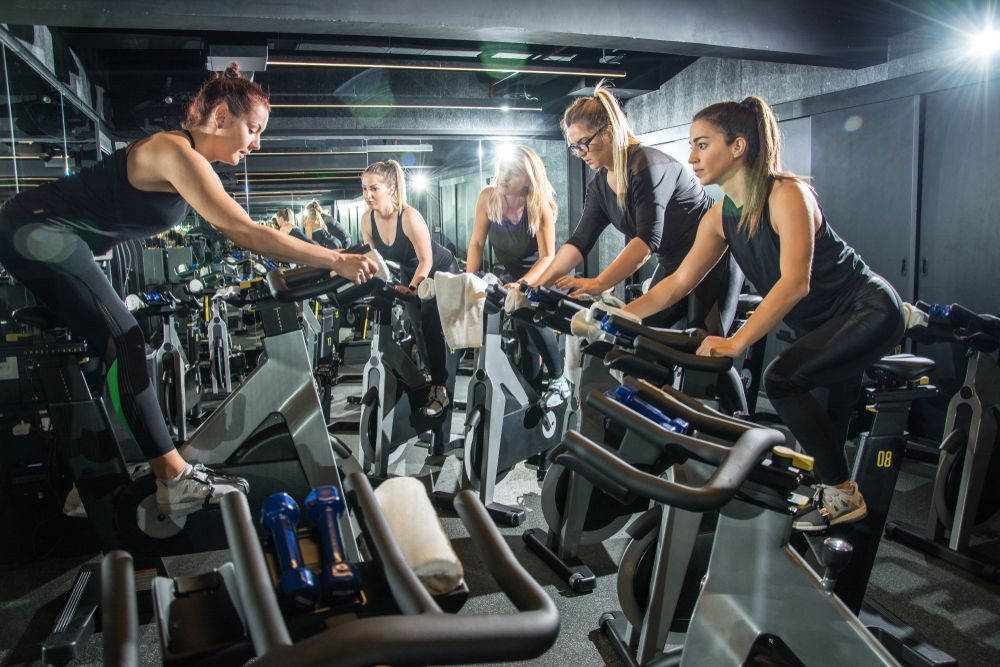
If you don't have your own indoor bike setup at home, your gym may offer group spin classes. These classes are high-energy in a social, fun environment. In these classes, the instructor sets the tempo and difficulty level. Hence, you'll need to adapt as your pregnancy progresses. Make sure to inform the instructor about your pregnancy and inquire if they have experience with pregnant participants.
Ideally, opt for a class led by an instructor with prenatal exercise expertise. If that's not possible, sticking with the same instructor helps them get to know you better, aiding in identifying any signs of discomfort. It's a good idea to remain seated for most of the class. While standing might feel okay initially, your changing center of gravity as your belly grows can make it harder to maintain balance. Not to mention, standing might lead to discomfort in your lower back and joints. Remember to dial back the intensity to avoid overexertion.
Navigating Bicycle Riding Through the Trimesters of Pregnancy
First and foremost, your body is your best friend in this journey. It's going through some incredible changes, so pay close attention to how you're feeling. If you're used to cycling, you might be able to continue at a comfortable pace for the first trimester and into your second. However, as your bump grows, you might want to ease up a bit. Remember, now isn't the time to break speed records or conquer crazy trails. Always consult your physician before continuing to ride or engage in any exercise before each trimester.
First Trimester:
During the first trimester, you can generally continue your regular cycling routine with some modifications. Pay close attention to your body, and if you experience fatigue or nausea, consider reducing the intensity of your rides. As your belly grows, you might need to adjust your bike's handlebars to maintain a comfortable riding position.
Second Trimester:
The second trimester is often considered the sweet spot for cycling during pregnancy. Your energy levels are higher, and your baby bump is still manageable. Stick to smooth surfaces and avoid bumpy terrains. Additionally, be cautious when braking to prevent sudden jolts.
Third Trimester:
As you approach your due date, consider transitioning to a stationary bike instead of riding outdoors. This reduces the risk of accidents and provides more stability. Be mindful of your balance and avoid movements that strain your abdomen.
Listening to Your Body and Knowing When to Stop
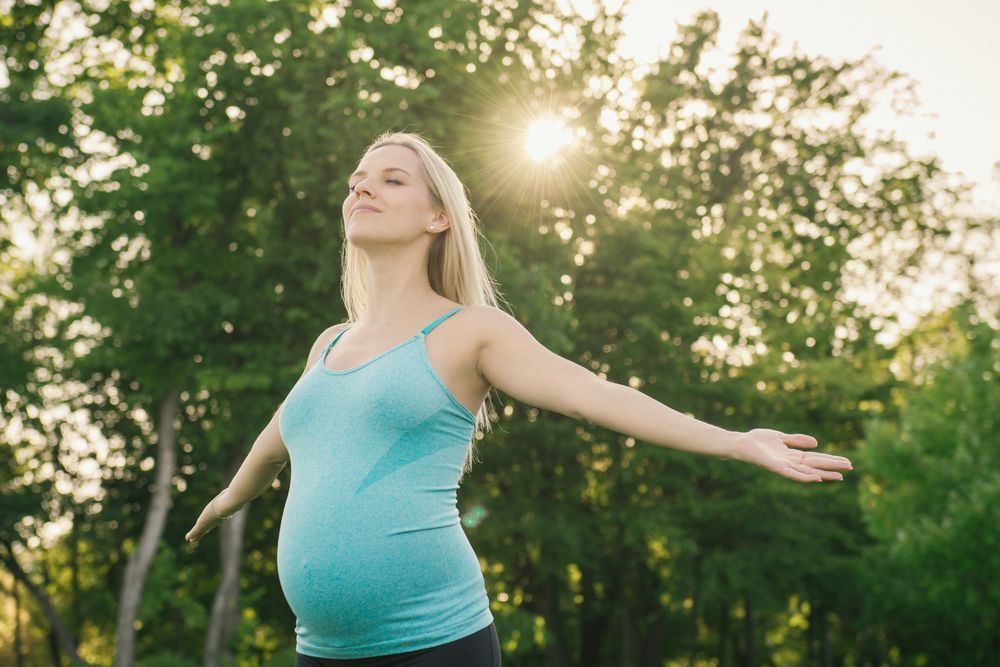

Your body has turned into a marvelous baby-growing haven. But it's also your best compass. If you experience any concerning symptoms during exercise, stop and consult your healthcare provider. Also, slow down or stop if you're unable to maintain a conversation or experience shortness of breath.
Jeana Miller provides her key takeaway: “If I’m breathing, the baby is breathing.” And she’s right, there’s no steadfast rule about heart rate anymore because every woman’s level of fitness is different. Remember, while cycling is generally low risk, any discomfort or pain should prompt you to pause or seek advice. Your healthcare provider might recommend avoiding exercise if you have specific high-risk conditions.
While cycling during pregnancy can be beneficial, there might come a time when it's best to stop. The American College of Obstetricians and Gynecologists lists the following warning signs. If you have any of them, stop your activity and call your doctor.
- Contractions
- Vaginal Bleeding
- Feeling dizzy or faint
- Shortness of Breath
- Leaking Fluid
- Chest pain
- Muscle weakness
- Calf pain or swelling
There might come a point when cycling becomes a bit too uncomfortable or risky. That's totally normal! Your comfort and your baby's safety are top priorities. If cycling no longer feels right, it's perfectly okay to take a break and explore other forms of exercise that make you feel great. Remember, every pregnancy is unique. What works for one might not work for another. The key is to cherish this incredible time and do what feels right for you and your growing baby.
Enjoy the Pregnancy Ride- Prioritizing Safety First
Cycling during pregnancy can be a safe and enjoyable way to stay active and promote overall well-being. Remember that every pregnancy is unique, so it's crucial to consult your healthcare provider before embarking on any exercise routine. By following safety precautions, adjusting your bike setup, and paying attention to your body's signals, you can make the most of this wonderful form of exercise during this special time in your life.
FAQ's
- Is it safe to ride a bicycle during pregnancy? In most cases, cycling can be safe during pregnancy if you follow safety guidelines and consult your healthcare provider. Every pregnancy is unique, so it's essential to get medical clearance and adjust your routine accordingly.
- When should I stop cycling during pregnancy? It's recommended to stop cycling during pregnancy if you experience contractions, vaginal bleeding, dizziness, pain, or shortness of breath. Always consult your healthcare provider for guidance.
- Are there specific types of bikes, accessories, or apparel for pregnant cyclists? Some pregnant cyclists prefer upright and comfortable bikes like cruisers or hybrids. You can also consider accessories like wider saddles, cushioned seat covers, and maternity cycling apparel for added comfort.
- Is it safe to ride a bike outdoors during pregnancy? Outdoor cycling can be safe, but it comes with more unpredictable factors like weather, road conditions, terrain, and traffic. Choose well-paved roads or designated bike paths, and always prioritize safety precautions.
- Can I participate in a spin class while pregnant? Indoor spin classes can be a good option during pregnancy, especially if the instructor is aware of your condition. Inform the instructor and consider staying seated for most of the class to maintain balance and comfort. Dial back the intensity or resistance to avoid overexertion.
- How can I maintain hydration and energy while cycling during pregnancy? Stay well-hydrated throughout your ride and carry energy-boosting snacks like bananas, nuts, or granola bars. Pregnant women need more hydration and calories due to increased energy expenditure.
- Are there any pregnancy complications that might prohibit cycling? High-risk pregnancies, balance concerns due to a growing belly, or medical conditions may limit or prohibit cycling during pregnancy. Consult your doctor for personalized guidance in such cases.
- Can I continue cycling during the third trimester of pregnancy?
Cycling during the third trimester may become less comfortable due to changes in balance and posture. Consider transitioning to a stationary bike indoors for added safety and stability.
At Bike Legal our mission is to advocate for bicycle safety and sharing the road responsibly through education.
Our legal team is committed to supporting and representing cyclists across the United States no matter where you ride or how you ride.
If you or someone you know has been involved in a bicycle accident,
Bike Legal is here to help!
Visit: BIKE LEGAL
or call 877-BIKE LEGAL (877-245-3534)


